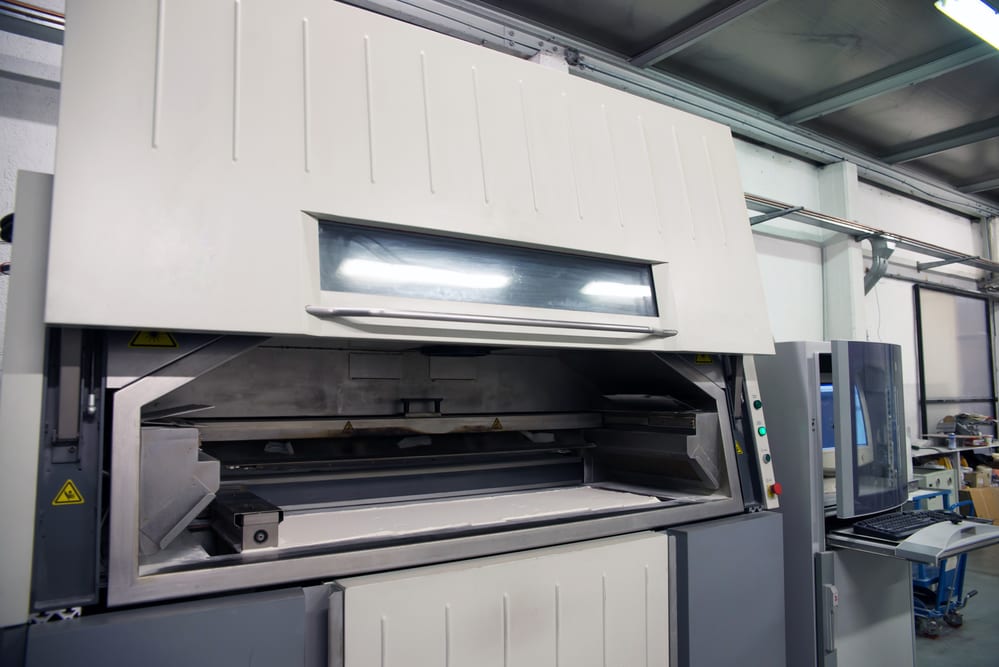
Additive Manufacturing: Review Of Opportunities In Key Industries 2017
$1,248.50 – $1,748.50
| Select User License | Single User License (one computer), Group User License (Up To Five Computers), Enterprise User License (Unlimited Computers Within Your Organization) |
|---|
Request Excerpt
Chapter One: Analyzing the Complete 3D Printing Industry and Associated Opportunities
1.1 About this Report
1.1.1 Considerations for Cross-Industry Hardware Data Analysis
1.1.2 Considerations for Cross-Industry 3D Printing Service Revenue Data Analysis
1.1.3 Market Segments Utilizing 3D Printing Not Included in This Study
1.2 Creating a Total Market Opportunity Picture
1.3 New Innovations in AM Market Analysis Featured in This Year’s Summary Data
1.4 Global 3D Printing Technology Report Cards
1.4 Review of 2016 3D Printing Market Megatrends and Predictions
1.4.1 Review of Previous Market Predictions for 2016
1.4.1.1 Effects of Increased Hardware Competition in 2016
1.4.1.2 Effects of Excess Hardware Capacity in 2016
Chapter Two: Review of 3D Printing in Aerospace 2016
2.1 Trailing Twelve-Month Activity Review for Additive Manufacturing in Aerospace
2.2 Significant Market Metrics and Landscape for Commercial and General Aviation and AM/3DP
2.2.1 Commercial Aviation Industry Trends Influencing 3DP Adoption and Opportunities
2.2.1.1 Building Value in AM Today through Small Innovations Key to Growing AM in Step-Change Aerospace Industry
2.2.1.2 Record Commercial Growth Expected in Various Commercial and Civil Aircraft
2.3 Current State of AM in Commercial Aerospace
2.3.1 Development of Ancillary Processes and Technologies for Production Environments Point to Capability Focus for AM
2.3.2 Interrelationship Between Space and Defense Markets and Commercial Markets Creating Mutual Benefit for 3D Printing Adoption
2.3.3 Moving Beyond Airplanes
2.4 Opportunities for Aerospace 3D Printing in Non-Commercial Markets
2.4.1 Market Factors in Space and Defense Influencing 3D Print Adoption
2.5 Extracting Value from Additive Manufacturing in Non-Commercial Applications
2.5.1 Additive Manufacturing Value in Space Vehicles
2.5.2 Additive Manufacturing Value in Large Satellites
2.5.3 Additive Manufacturing Value in Small Satellites
2.5.4 Additive Manufacturing Benefits in Space Applications
2.5.5 Additive Manufacturing Value in Military Aircraft
2.5.6 Additive Manufacturing Value in Missile Systems and UAVs
2.6 Review of Market Forecast Data for 3D Printing in Aerospace
Chapter Three: Review of 3D Printing in Automotive 2016
3.1 Updates to SmarTech Publishing’s Automotive 3D Printing Adoption Model
3.2 Changing Auto Industry Dynamics and Their Role in Future 3D Printing Adoption
3.2.1 Mass Reduction Capabilities Will Lead 3D Printing as a Next-Generation Manufacturing Tool for the Automobile Industry
3.3 Trailing Twelve-Month Automotive 3D Printing Activity Summary
3.3.1 Automotive Stakeholders Continue to Find Innovative Value-Driven Applications for 3DP in the Long-Term Quest for Additive Production Automotive Parts
3.3.2 AM Technology Developers Pursue Vertical Integration Strategies, Application-Specific 3D Printing Solutions Targeted at the Auto Industry
3.4 Understanding the Importance and Dynamics of 3D Printed Prototypes in Automotive Design and Manufacturing
3.4.2 Enhancing Design Efficiency
3.4.3 Hierarchy of Automotive Prototypes and 3D Printing
3.5 Review of Market Forecast Data for 3D Printing in Automotive
Chapter Four: Review of 3D Printing in Medical Markets 2016
4.1 Introduction to Medical 3D Printing Markets
4.1.1 Review of Medical 3D Printing Market Activity in 2016
4.1.1.1 Activity in Medical Professional Assistance (MPA) Medical 3D Printing
4.1.1.2 Activity in Direct Patient Use (DPU) Medical 3D Printing
4.2 Understanding Key Users of Printed Medical Parts
4.3 The Power of 3D Print-enabled Technologies in Medical Applications
4.3.1 The Role of Medical Imaging In 3D-Printed Medical Applications
4.3.2 The Importance and Opportunity for Software in 3D- Printed Medical Applications
4.4 Key Medical 3D Printing Application Areas
4.4.1 Medical Modeling
4.4.2 Orthopedic and Other Implants
4.4.3 Prosthetics and Related Components
4.4.4 Surgical Tools and Guides
4.5 Review of Market Forecast Data for 3D Printing in Medical Markets
Chapter Five: Review of 3D Printing in Dental Markets 2016
5.1 Identifying Value Centers and Stakeholders of 3D Printing in Dentistry
5.2 Trends in Traditional Dentistry Affecting the Future of 3D-Printed Dentistry
5.2.1 Tipping Point for Subtractive and Additive CAD/CAM Dental Solutions Fast Approaching
5.3 Major Evolution in 3D Printing Hardware and Materials Development Expected to Drive Additive-Dominant Digital Dentistry Scenario
5.3.1 High-speed Photopolymerization Technologies Could Tip the Competitive Advantage to Additive CAD/CAM
5.3.2 Low-Cost Photopolymerization Technologies Provide Entry Point for Improving Digital Workflow in the Dental Office
5.4 Review of Market Forecast Data for 3D Printing in Dentistry
Chapter Six: Review of 3D Printing in Jewelry 2016
6.1 Next Generation of 3D Printing in Jewelry: Direct Fabrication via Powder Bed Fusion
6.2 Low-Cost Printers to Significantly Affect Jewelry 3D Printing Market
6.3 Review of Market Forecast Data for 3D Printing in Jewelry
Chapter Seven: Review of 3D Printing in Oil and Gas 2016
7.1 Oil and Gas Industry Dynamics Set Potentially Big Stage for Additive Manufacturing
7.1.1 Relevant Adopting Sectors of the Oil and Gas Industry
7.1.2 Influence of Low Oil Prices on Adoption of 3D Printing Technology in Oil and Gas
7.1.2 An Industry in Need of Manufacturing Innovation
7.2 Current Industry Activity and Adoption of AM Technology Review – 2016
7.3 Review of Market Forecast Data for AM/3DP in Oil and Gas
About SmarTech Publishing
About the Analyst
Acronyms and Abbreviations Used In this Report
List of Exhibits
Exhibit 1-1: Summary of Key Market Opportunities for Polymer Powder Bed Fusion Hardware
Exhibit 1-2: Summary of Key Market Opportunities for Metal Powder Bed Fusion Hardware
Exhibit 1-3: Summary of Key Market Opportunities for Photopolymerization Hardware
Exhibit 1-4: Summary of Key Market Opportunities for Material Extrusion Hardware
Exhibit 1-5: Summary of Key Market Opportunities for Material Jetting Hardware
Exhibit 1-6: Summary of Key Market Opportunities for Binder Jetting Hardware
Exhibit 1-7: Summary of Key Market Opportunities for Directed Energy Deposition Hardware
Exhibit 1-8: Summary of Key Market Opportunities for Laminated Object Manufacturing Hardware
Exhibit 2-1: Framework for Aerospace Manufacturing Innovation
Exhibit 2-2: Penetration of 3DP in the Aerospace Manufacturing Innovation Framework
Exhibit 2-3: Evolving Domains of 3D Printing Exploration in Aerospace
Exhibit 2-4: Summary of Benefits Extracted from AM in Space Applications
Exhibit 2-5: Total Projected Aerospace 3D Printing Revenues, by Category, 2014-2024
Exhibit 2-6: Total Projected Aerospace 3D Printer Annual Unit Shipments, by Print Technology, 2014-2024
Exhibit 2-7: Total Projected Aerospace 3D Printer Hardware Revenue, by Print Technology, 2014-2024
Exhibit 2-8: Total Projected Aerospace 3D Printing Material Revenue, by Category, 2014-2024
Exhibit 2-9: Total Projected Aerospace 3D Printing Software Revenue, 2015-2026
Exhibit 3-1: Updated SmarTech Publishing Automotive 3D Printing Industry Adoption Model
Exhibit 3-2: Exploring 3D Printing in Automobile Technology Development Areas for Increasing Fuel Economy
Exhibit 3-3: Three Pillars of Additive Automobile Design Evolution
Exhibit 3-4: Potential Polymer and Thermoplastic Composite Applications for 3D Printing in Automobiles to Reduce Weight
Exhibit 3-5: Hierarchy of 3D-Printed Automotive Prototype Parts
Exhibit 3-6: Total Projected Automotive 3D Printing Revenues, by Category, 2014-2026
Exhibit 3-7: Total Projected Automotive 3D Printer Annual Unit Shipments, by Print Technology, 2014-2026
Exhibit 3-8: Total Projected Automotive 3D Printer Hardware Revenue, by Print Technology, 2014-2026
Exhibit 3-9: Total Projected Automotive 3D Printing Material Revenue, by Category, 2014-2026
Exhibit 3-10: Total Projected Automotive 3D Printing Software Revenue, 2015-2026
Exhibit 4-1: Current Adoption Level for Major Medical Components by Group
Exhibit 4-2: Potential Adoption Level for Major Medical Components by Group
Exhibit 4-3: Medical 3D Printing Stakeholder Profiles
Exhibit 4-4: Beneficial Traits of 3D-Printed Orthopedic Implants
Exhibit 4-5: Total Projected Medical 3D Printing Revenues, by Category, 2014-2024
Exhibit 4-6: Total Projected Medical 3D Printer Annual Unit Shipments, by Print Technology, 2014-2024
Exhibit 4-7: Total Projected Medical 3D Printer Hardware Revenue, by Print Technology, 2014-2024
Exhibit 4-8: Total Projected Medical 3D Printing Material Revenue, by Category, 2014-2024
Exhibit 4-9: Total Projected Medical 3D Printing Software Revenue, 2015-2026
Exhibit 5-1: Summary of Value of 3D Printing Technology in Dental Markets
Exhibit 5-2: Dental Printing Material Development Timeline and Future Market Scenario Visualization
Exhibit 5-3: High Speed Photopolymerization Printer Developments
Exhibit 5-4: Total Projected Dental 3D Printing Revenues, by Category,
2014-2025
Exhibit 5-5: Total Projected Dental 3D Printer Annual Unit Shipments, by Print Technology, 2014-2025
Exhibit 5-6: Total Projected Dental 3D Printer Hardware Revenue, by Print Technology, 2014-2024
Exhibit 5-7: Total Projected Dental 3D Printing Material Revenue, by Category, 2014-2024
Exhibit 5-8: Total Projected Dental 3D Printing Software Revenue, 2015-2026
Exhibit 6-1: Benefits of Directly Fabricated Jewelry via AM versus Investment Casting
Exhibit 6-2: Total Projected Jewelry 3D Printing Revenues, by Category, 2014-2024
Exhibit 6-3: Total Projected Jewelry 3D Printer Annual Unit Shipments, by Print Technology, 2014-2024
Exhibit 6-4: Total Projected Jewelry 3D Printer Hardware Revenue, by Print Technology, 2014-2024
Exhibit 6-5: Total Projected Jewelry 3D Printing Material Revenue, by Category, 2014-2024
Exhibit 7-1: Markets for AM Equipment in the Oil and Gas Industry
Exhibit 7-2: The Innovation/Investment Dichotomy for Additive Manufacturing in Oil and Gas
Exhibit 7-3: Using AM to Address Oil and Gas’ Biggest Challenges
Exhibit 7-4: Current Adoption of AM Technology in the Oil and Gas Sector
Exhibit 7-5: Total Projected Oil and Gas AM/3DP Revenues, by Opportunity Category, 2015-2025
Exhibit 7-6: Total Projected AM/3DP Hardware Revenues, by Technology, 2015-2025
Exhibit 7-7: Total Projected AM Hardware Unit Shipments, by Technology, 2015-2025
Exhibit 7-8: Total Projected AM Material Revenues, by Category, 2015-2025
Exhibit 7-9: Total Projected AM Software Revenues in Oil and Gas, 2015-2025
The legacy of 3D printing and additive manufacturing continued to be established throughout 2016, which will no doubt go down in history as one of the most pivotal years ever for 3D technologies. The massive influx of competitive forces into the hardware, software, and materials for 3D printing markets has set the stage for the future of the industry -one that will likely be won by those able to capitalize on the demand for true manufacturing solutions for serial production, mass customization, and unique healthcare solutions.
For those stakeholders with a broad, global market interest in 3D printing technology and applications, this report provides both major driving adoption trends and findings in each industry segment of 3D printing, as well as a wealth of in-depth market forecast data as modeled by SmarTech Publishing’s industry leading methodologies and market models for 3D printing technology. Market data included in this report features 10 year forecasts of revenues for various 3D printing technologies, materials, printing services, software, as well as printer shipments by each print technology category across six major adopting industries.
Printer manufacturers, providers of print solutions and services, and potential print technology and component developers will find this unprecedented access to a wide variety of SmarTech market data and review of key annual findings critical to planning future initiatives in the 3D printing industry for 2017 and beyond.

